Copyright © 2023, Spark. All rights reserved.
Powered by People’s Inc. 360 (PINC 360).
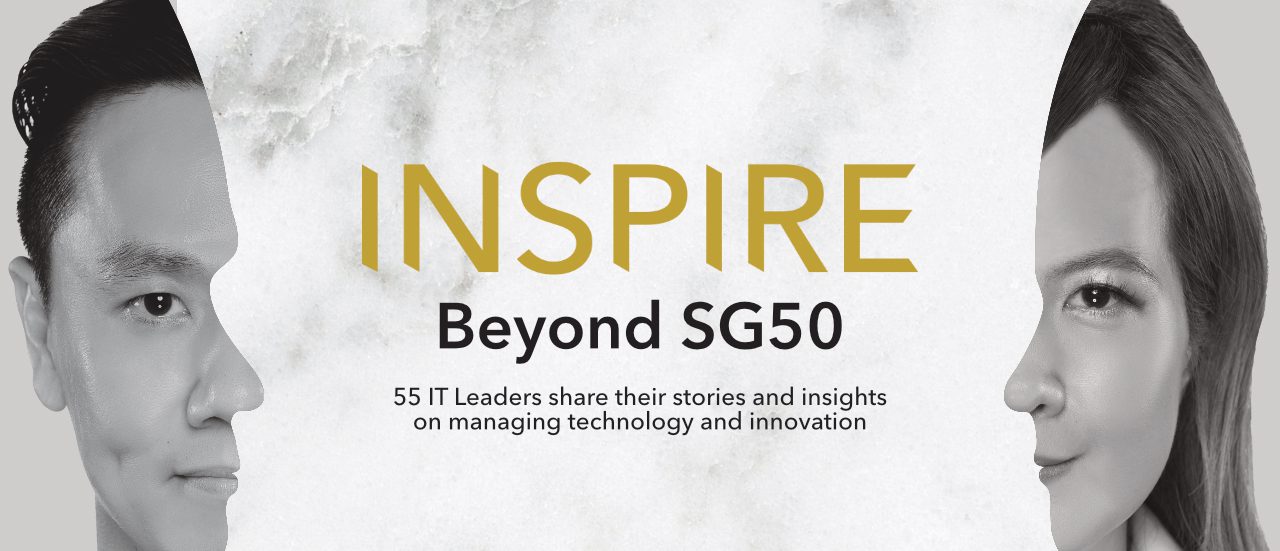
INSPIRE Beyond SG50 features a collection of anecdotes by 55 CIOs and business leaders. The stories give a peek into how the CIO play an integral and pivotal role in helping businesses and organisations to meet challenges and realise their vision.
BOOK LAUNCH 3RD NOVEMBER 2016
GENESIS OF INSPIRE Beyond SG50 BOOK
This pillar is led by Mr Lee Kee Siang focusing on the need for CIOs to demonstrate high level of professionalism to act and lead with integrity despite the heavy responsibility of CIOs to oversee the deployment of technologies in an innovative manner to enhance an organisation’s competitive business edge.
This section highlights the need for CIOs to uphold high integrity to do what is right and be prepared to account for their actions and decisions. This leadership quality is essential to help CIOs remain intact even when facing challenges and crisis.
Under the Integrity pillar in this volume, eight senior Information Technology (IT) professionals from diverse backgrounds spanning public, private and non-profit organisations have contributed their experiences and perspectives on different aspects of Integrity. Beyond personal perspectives, they also share real life cases where Integrity was compromised, their analyses of the damage caused, and suggestions on how appropriate governance can be put in place to avoid such pitfalls. They also share insights on good practices for motivating staff so as to inculcate healthy work environments and promote a collaborative workforce that focuses on shared goals.
One of the most challenging aspects of a CIO’s job is to look ahead for opportunities and drive innovation initiatives while managing the day-to- day ‘whirlwind’ of business/IT operations and customer support. This requires leadership ambidexterity, a trait found in the writers and contributors to this “New” section.
This pillar is led by Mr Alvin Ong to focus on Change and Innovation. One of the most challenging aspects of a CIO’s job is to look ahead and drive innovation initiatives while supporting day-to-day operations. Innovation is also fraught with risks and frequently impeded by organisational inertia and status quo. In this pillar, CIOs will share their war stories and practical wisdom gleaned from their transformation journey.
Today’s CIOs face myriad challenges of increasing urgency and intensity. Amidst a sea of uncertainty and constraints, CIOs need to navigate with agility, focus and resolve. It goes without saying that a well-conceived plan or strategy is essential in charting a course successfully. As Peter Drucker once said, “There is nothing so useless as doing efficiently that which should not be done at all.”
It is undisputed that CIOs need to have a better understanding of their businesses’ technology needs, both in the short as well as long term.
They are also called upon to be more effective at driving partnerships and shared accountability with the business.
This pillar is led by Mr Don Yeo on Strategic IT.
The sections in this pillar capture the experience and wisdom of our contributors who are senior IT leaders. Alex Siow introduces the primary role of the CIO while Alvin Tan goes on to describe more specifically the “underbelly” of IT strategy development. Clara Lee then tackles the very current challenge of how IT leaders can effectively tackle digital transformation in their organizations, while I in turn provide my perspectives as a non-technical CIO leading an IT organization and Vijay K Sharma concludes by issuing a challenge for IT leaders to go beyond engagement to business intimacy.
This pillar, led by Mr Koh Kok Tian, focuses on people who form the basis of leading capabilities necessary to drive any business transformations, such as digital.
Most CIOs will tap on the talents, creativity and ingenuity of their IT resources to leverage technologies in creating competitive differentiation fortheirbusinesses. Today’s accelerated pace of change is non-linear, punctuated by disruptive technologies that create gaps between IT competencies to the right application of technologies. Beyond capabilities,‘People’ is a multi-faceted subject. The contributed segments from CIO practitioners here offer unique perspectives based on their professional and personal insights on ‘People’.
In this section, Glen Francis offers an interesting account from his early career years of how his mentor taught him the importance of respect. Respect forms the basis of sustained relationships and while one focuses on technology, it is important to not neglect the human aspects.
Ng Tiong Gee discusses the managing of people, how CIOs need to understand the differences of A versus B personalities across cultures and nationalities and how each type requires different management approaches in order to be effective.
Tony Yeoh highlights the need for CIOs themselves to transform and manage the paradoxical aspects of Core Purpose, Charisma, Capability and Competency juxtaposed with Reputation, Relationships, Recruitment and Relevance.
Lau Kai Cheong brings back us back to the importance of setting a clear vision and mission, and devise strategies that can be successfully delivered with the right people, right processes and right technology.
This pillar is led by Mr Lim Kuo Siong. It focuses on the need for CIOs to build up a key survival skill with the ability to manage relationship with various stakeholders as a way to influence business strategies. No longer are the days when IT can just focus on keeping the lights on. Differentiating a good technology achievement with that of a great business value delivery.
The authors argue that CIOs are in a position to connect the dots, paint the big picture and thus foster collaboration among various stakeholders.
They should realize the value of building and leveraging relationships that can enable them to deliver on commitments and organisational expectations. As part of their multifaceted roles, CIOs should embrace the relationship dimension which may require them to tap on extended networks to build a strong ecosystem in IT and beyond.
In this way, the CIO’s role calls for a complex yet appreciative view of relationships. Relationships based on loose linkages or superficial ties are like a single thread that will break easily under the least strain. But if we build a web of relationships based on mutual trust, support and integrity, they will be resilient and better able to withstand hard times or future shocks such as technological, economic or business disruptions.
This pillar is led by Paolo Miranda about exceeding each and every expectation extraordinarily. The authors argue that excellence improves performance to greatly surpass normal standards in achieving a continuously moving target. The original and creative use of technology plays an important part in every organization’s pursuit of excellence for a better world.
For IT professionals, excellence is like a never-ending list of project implementations and enhancements to improve systems and technology for businesses. There can always be better ways to perform or make something especially in the realm of Information Technology where new inventions and innovations are developed faster than ever before.
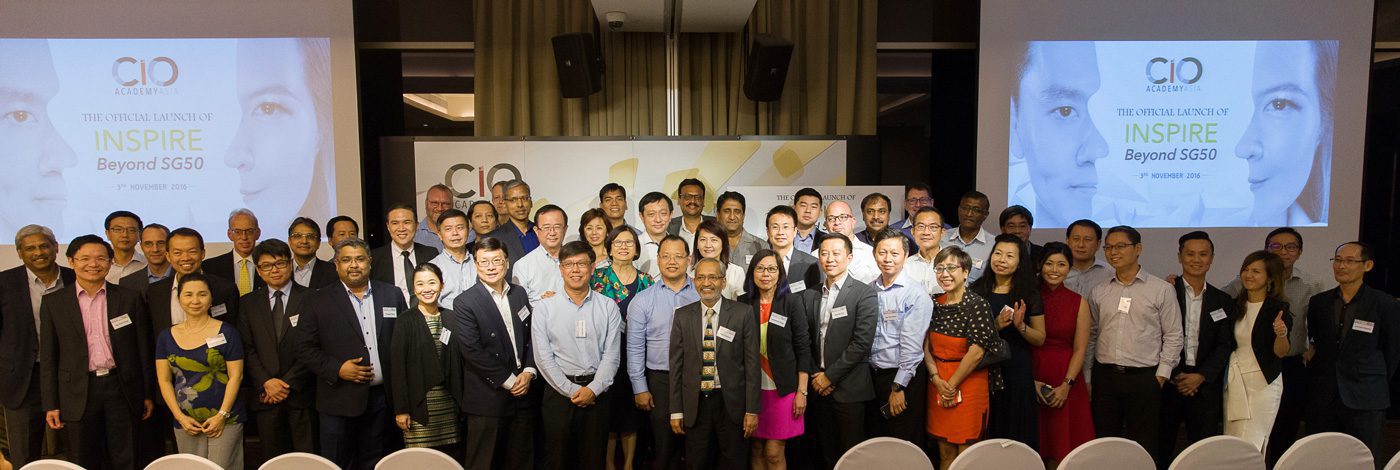
CIO Academy Asia would like to thank those who were involved with the book. With special mention to the core team made up of the 7 Pillar Leaders; Lee Kee Siang, Alvin Ong, Don Yeo, Koh Kok Tian, Ramesh Narayanaswamy, Lim Kuo Siong and Paolo Miranda, and especially Candice Poh, who came onboard as Chairperson for this project and Catherine Goh whose vast experience and meticulous leadership was invaluable especially during the final phase of this project.
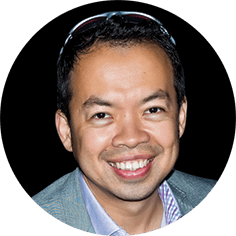
Book Leader
President, CIO Academy Asia
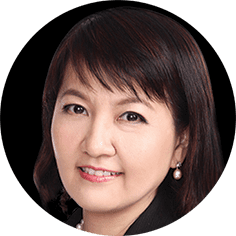
Book Chairperson
Chief Lead Officer, IRAS

Copy Editor and Coordinator
Director of Information Technology, NKF
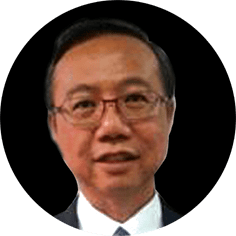
Pillar Leader (Integrity)
Chief Information Officer and Director (Resource Discovery and Management) of the Singapore National Library Board (NLB)

Pillar Leader (New)
CIO for Alexandra Health System (AHS)

Pillar Leader (Strategy)
Deputy President (Administration) at the National University of Singapore (NUS)
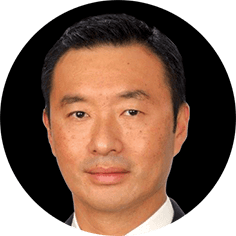
Pillar Leader (People)
Director, Supply Chain Operations and Information Systems, Inchcape’s South Asia
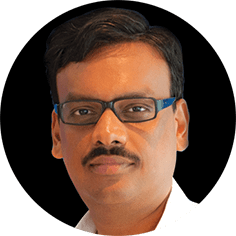
Pillar Leader (Implementation)
Group Chief Information Officer for Singapore Post
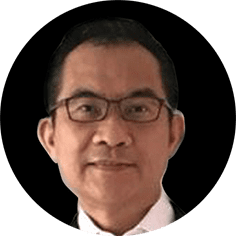
Pillar Leader (Relationship)
Chief Information Officer at Maybank Singapore
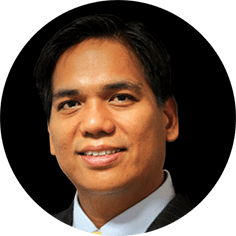
Pillar Leader (Excellence)
Membership Director of (ISC)2 Singapore. Former Chief Information Officer, Asia/Australia, REHAU Pte Ltd
Curator
Deputy CEO, CIO Academy Asia
Content Editor
Assistant Director Projects Management, SingEx Exhibitions
Cover Designer
Head of Relations, CIO Academy Asia
Layout Designer
Community Manager, , CIO Academy Asia
Gabriel Lim
Second Permanent Secretary, Ministry of Communications and Information, and Chief Executive, IMDA Singapore
“To succeed, we must support and learn from one another. To that end, this book is an excellent resource for CIOs and ICT professionals. It captures personal reflections and insights from over 50 experts who have sat in the hot seat. I hope you find this treasure trove of experiences a useful resource as you lead your organisations and colleagues into an exciting future.”
Alvin Ong
President, IT Management Association (ITMA), Singapore
“ITMA is pleased to collaborate with CIOAA on this exciting ‘INSPIRE Beyond SG50’ book project. The inspirational lessons shared in the book is an excellent guide for our future tech leaders. A majority of the contributors and pillar leaders are senior members of ITMA.”
Howie Lau
President, Singapore Computer Society (SCS)
“Technological innovations have not only changed our lives but has become interwoven in our daily lives. This book contained many interesting stories about our technology journeys over the last couple of decades. Thank you CIO Academy for taking the initiative to document this rich resource and inspire our industry beyond SG50.”
Jordan Schwartz
Director, Infrastructure & Urban Development Hub, The World Bank, Singapore
“This book will inspire the next generation of tech leaders and also serve as a timely primer for Digital Transformation journeys in emerging markets and developing economies”
Bill Liu
Chairman & Managing Partner, Stream Global Pte Ltd
“This is an excellent “A to Z” CIO guide that will inform and INSPIRE (as the book is aptly named) future CXOs through the insightful and very personal reflections by a diverse group of CIOs and tech leaders covering the entire landscape of the CIO’s role and functions. More importantly, I think it captures the often hidden requisites that make a good CIO such as good governance and people management as well as the personal attributes such as integrity, openness and empathy. Indeed reading the contributions from the CIOs, I believe CIO’s role has progressed. CIO does not mean “Career Is Over”, it is “Career In Overdrive” Keep up with the Good Work!”
Shirin Hamid
Principal Director (CIO), Asian Development Bank (ADB)
“This collection of essays is truly a relevant and timely publication. Each essay brims with invaluable wisdom and insight that can help IT professionals at any level to navigate their career. If I may be so bold as to imagine that further improving INSPIRE would be at all possible, I would like to suggest the addition of two pillars: “Sustainability” and “Development”. I congratulate the INSPIRE team for putting together a publication that encapsulates the core values and attributes that any aspiring and practicing CIO should embrace.”
Grace Chng
Veteran Tech Writer
“CIOs are in the hot seat, they are both the Chief Information and Innovation Officer. Inspire Beyond SG50 is a timely book as a platform for learning, where experienced CIOs can impart their practical knowledge to their younger colleagues.This is the first time that such issues are discussed in such breadth and depth. It is a must-read for younger ICT professionals aiming to be the tomorrow’s CIOs.”
Lanny Cohen
Global Chief Technology Officer, Capgemini
“Inspiring, practical, and results-focused perspectives from an impressive cadre of leaders who are on the frontline of business, digital and IT transformation. A rare but welcome insight into the interplay of values, strategy, innovation and execution for sustainable IT-influenced, business impact.“
Lim Swee Cheang
Vice Dean, School of Continuing and Lifelong Education (SCALE), NUS
“With 55 great minds writing 58 articles, these IT leaders are generously sharing their valuable wisdom and interesting perspectives on 7 hot topics that have been confronting all of us in the world of managing technology and driving innovation. We may not fully apprehend some of the issues advocated but I am certain that we are all becoming wiser with new senses after reading their thoughtful and inspiring articles and stories. For me, I am enlightened.
P. Ramakrishna
Deputy CEO, CIO Academy Asia
“Our tech leaders have shown the new face of IT management and innovation through their stories, insights and experiences gleaned from treading the narrow path which will leave useful sign posts for our future and aspiring CIOs”
Prof. Kevyn Yong
Dean, ESSEC Business School, Asia-Pacific
“At ESSEC Business School, we believe in the “Pioneering Spirit”. To this end, we have learned much about the pioneering spirit from our partnership with the CIO Academy Asia. This book certainly brings a fresh perspective to what it means for the CIO of today and tomorrow to be a pioneer with integrity, innovation, and implementation.”

Spark (formerly CIO Academy Asia) brings together a community of technology and business leaders from across Asia.
Copyright © 2023, Spark. All rights reserved.
Powered by People’s Inc. 360 (PINC 360).
There was a problem reporting this post.
Please confirm you want to block this member.
You will no longer be able to:
Please note: This action will also remove this member from your connections and send a report to the site admin. Please allow a few minutes for this process to complete.
SPARK brings together a community of technology and business leaders from across Asia.